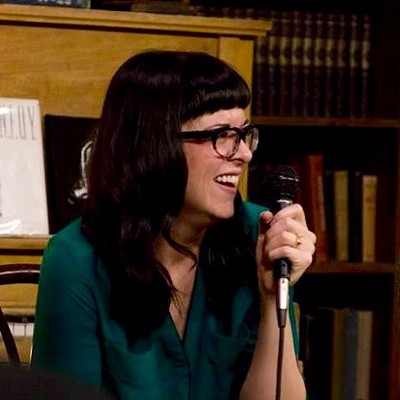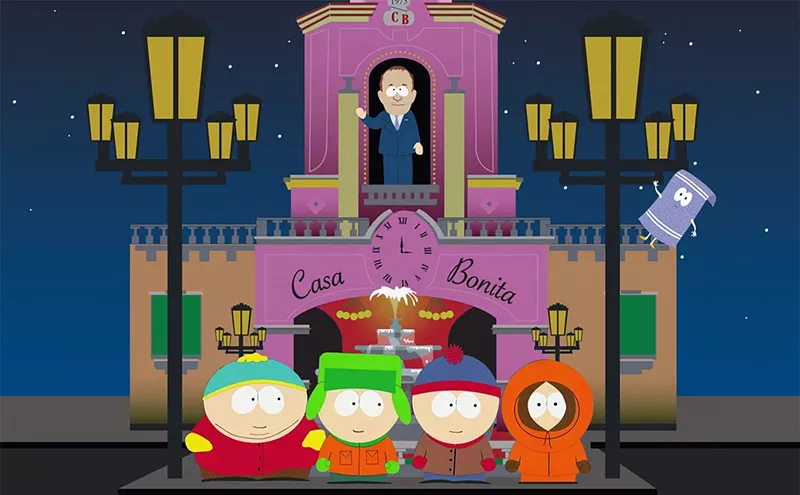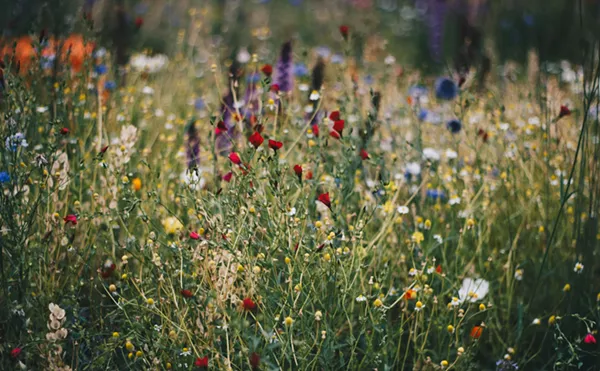Last summer, as I sat in the basement of the downtown Comedy Works listening to Dana Crawford explain how and why she went to the lengths she did to save Larimer Square from demolition a half-century ago, my mind kept getting stuck on the same thought: What makes a place or thing historic is almost directly related to what that place or thing means to you. It doesn't have to be about the history of a place or your own experience with it — Crawford herself isn't from Denver and she didn't grow up here. But she saw something in the buildings along the 1400 block of Larimer Street that meant something to her, on some level, and decided to devote all her energy to finding a way to save them.
Born and raised in Denver, I'd always recognized the importance of the block of late-1800s structures; they are a living testament to our Wild West past, a story that has been told and retold to me as the story of Denver. The brick storefronts lined up next to each other on the Square look like the set of a Western that's been cut from a Hollywood movie lot and placed in the middle of a semi-modern city. Knowing the ugly history of the Denver Urban Renewal Authority and its thoughtless demolishing of 27 blocks of the cityscape in the late '60s, it sometimes surprises me that Larimer Square and anything of its era still exists at all.
Denver really lucked out with Crawford's personal investment. In fact, soon after she launched her quest, the city itself decided to get with the program and in 1967 enacted the Landmark Preservation Ordinance, which laid the groundwork for Denver's present-day preservation process. In the nearly five decades since the ordinance was put into place, the city has saved more than 300 structures from demolition. It wouldn't have happened without the help of people like Crawford and the tireless work of Historic Denver and other nonprofits, though; this town has been lucky to have a lot of people on its side.
As the night of "Stories From the Square" rolled on, a program honoring Larimer Square's fiftieth anniversary, Crawford and her fellow panelists regaled the captive crowd with details of the many great things about early Denver encapsulated in this single block: Larimer Street was home to the "first" post office, the "first" bank and the "first" theater. But that made me think about the area's other "firsts" before a bunch of white guys got here. Who took care of this land before General William H. Larimer Jr. wandered over from Kansas and jumped the claim? It's as if Denver was just born — though by name it was — the moment the transplants took over. (Denver was actually named after a Kansas territoritorial governor, James. W. Denver, a dude who never even came to visit the new town, from what I can tell.)
Our history as a city — and state — is far from simple or one-sided. As a person who learned Colorado history in chunks throughout my schooling, it wasn't until I was doing research as an adult that I learned about other events far from the romantic "Wild West" I had been told about. Like the Sand Creek Massacre, one of the darkest chapters in our state's history, when Colonel John Chivington's men attacked a peaceful camp of Cheyenne and Arapaho, then marched triumphant into Denver. The victims are remembered and mourned through memorial plaques here; there are no historic blocks to save. (The National Parks Service oversees the Sand Creek Massacre National Historic Site outside of Eads.)
As I was working on this week's cover story, "Building for the Future," I thought a lot about what, exactly, a historic landmark meant to me. I've always been interested in buildings, the interior and exterior atmospheres they create, the context they give to a city like Denver, and the people whose lives might be connected to them in some way. My first thoughts when it comes to preservation have typically been about buildings and their aesthetics; I like ornate, detailed woodwork found in Queen Anne-era homes and the wild angles and colors of mid-mod Googie architecture. But what about the structures that my eye initially overlooks? After doing so much research on preservation, I have found my own focus shifting. I want to know more about parts of town I've somehow missed experiencing; I want to know where important pieces of Denver's story took place so that I can examine them — not just from an architectural perspective, but from a historical and geographical standpoint, too.
The second part of the cover story involved researching official Denver historic landmarks, as well as structures I thought could be historic but weren't. This was when the range of properties we choose to save became especially apparent. It wasn't just about what older properties looked appealing to someone like me; it was about finding ways to tell Denver's story through the places occupied by the people who made it all happen. Denver's Landmark Preservation ordinance has been used to save buildings like Justina Ford's home, which is now the Black American West Museum. Ford was the first female, African-American doctor to practice in Denver — and in the country. Though she was denied proper credentials because of her gender and race, Ford turned her home into a medical facility anyway, serving people of color, poor white folks and many non-English-speaking immigrants. She mattered to the complete picture of Denver; so does her home.
I thought about how just last year, the Corky Gonzales library opened its doors on the west side, a functioning, community-oriented memorial to a Chicano activist who changed the city of Denver forever. A few months before the library's opening, one of Jerry Jaramillo's remaining city murals was destroyed; the artist had been a founding member of the Chicano Humanities and Arts Council. Is CHAC's home on Santa Fe Drive any less historic in its importance to the city than a building on General William Larimer's block? So far, though, no one has made a move to have it designated a landmark.
As I learned when studying our city's preservation process, the tenets of historic preservation in Denver weren't just created with aesthetics in mind; a building like CHAC's home could be considered for historic designation — if a citizen wanted to argue for its importance. It's not always about who or what was there; it can be about what happened there.
It's really up to us, the people of the city, to push for the preservation of places in Denver that mean something to us; after all, who knows a city better than the people who live in it? We don't get to have the final say in whether a building is important enough to be saved; after we make the nomination, the final decision is up to Denver City Council — but we elect those people. So it's ultimately our decision if we want to save buildings through landmark preservation or let the past disappear. If you choose to use this power as a citizen to get involved in the process of saving our built environment, challenge yourself to look a little closer. The historic preservation of Denver isn't just about saving the Victorian mansions and vestiges of the Wild West; it's about unearthing the whole picture and seeing this story truly told, so that future Denver can remember the people who made us who we are.
Be my voyeur (or better yet, let me stalk you) on Twitter: @cocodavies

Audio By Carbonatix
[
{
"name": "GPT - Billboard - Slot Inline - Content - Labeled - No Desktop",
"component": "23668565",
"insertPoint": "2",
"requiredCountToDisplay": "2"
},{
"name": "STN Player - Float - Mobile Only ",
"component": "23853568",
"insertPoint": "2",
"requiredCountToDisplay": "2"
},{
"name": "Editor Picks",
"component": "17242653",
"insertPoint": "4",
"requiredCountToDisplay": "1"
},{
"name": "Inline Links",
"component": "18838239",
"insertPoint": "8th",
"startingPoint": 8,
"requiredCountToDisplay": "7",
"maxInsertions": 25
},{
"name": "GPT - 2x Rectangles Desktop, Tower on Mobile - Labeled",
"component": "24956856",
"insertPoint": "8th",
"startingPoint": 8,
"requiredCountToDisplay": "7",
"maxInsertions": 25
},{
"name": "Inline Links",
"component": "18838239",
"insertPoint": "8th",
"startingPoint": 12,
"requiredCountToDisplay": "11",
"maxInsertions": 25
},{
"name": "GPT - Leaderboard to Tower - Slot Auto-select - Labeled",
"component": "17676724",
"insertPoint": "8th",
"startingPoint": 12,
"requiredCountToDisplay": "11",
"maxInsertions": 25
}
]











